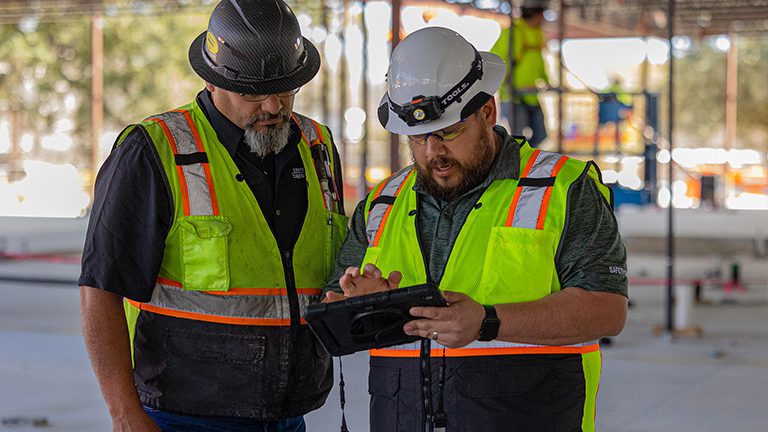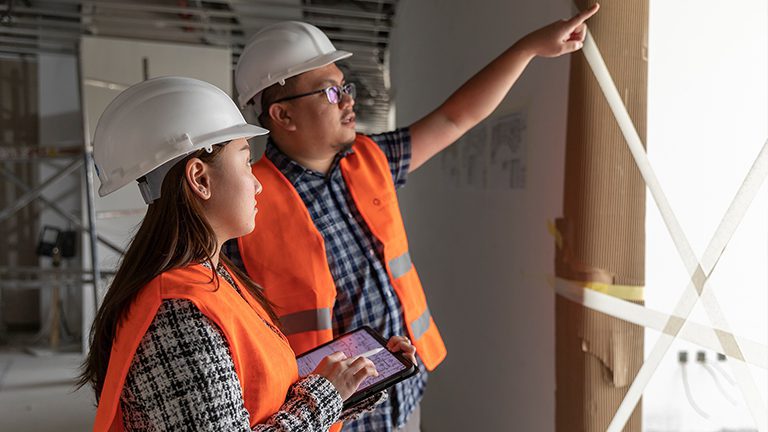From unlocking new ways to attract and retain talent to reducing rework that helps minimize construction’s environmental impact, the construction industry is undergoing a big transformation. What does this mean for the industry? Digital and cultural transformations are taking place in the industry, and businesses are using technology and innovative thinking to overcome a range of challenges and tap into vast opportunities.
When combined, both can change the workplace status quo and enable construction companies to adapt to challenges, both big and small. Here’s a look at how these digital and cultural transformations are reshaping the industry:
Digital Transformation
Digital transformation is a strategic business decision that requires organizational change and technological implementation from the roots up, going beyond digitization. Integrating software that provides live collaboration across field and office teams increases efficiency, communication and visibility.
Construction Data & Intelligence
Construction produces a vast amount of data every year. However, this wealth of information is rarely tapped into, meaning that helpful historical data goes unused by decision-makers. Stakeholders are often left to make strategic business plans without such data, inviting unnecessary risk.
With a digital platform, data can connect and integrate with other tools, creating a central source of information that empowers data-driven decisions. Such platforms help organizations use data not only to be more secure, but also to identify potential problems so they can work proactively. Unique insights enable organizations to plan confidently for the future.

Fintech
Cash flow, insurance and lending challenges are rife in the industry. This results in project delays, decreased profits and avoidable inefficiencies. In fact, less than 10% of construction businesses get paid on time.
Fortunately, the construction sector is becoming more aware of the value of financial technology (fintech) for mitigating material financing, lien and insurance challenges. With fintech, organizations can better address financial challenges. By leveraging technology, businesses can achieve more consistent profitability, manage cash flow and proactively navigate potential issues.
Sustainability
The industry is beginning to build more sustainably using technology that creates numerous opportunities for greener construction. More organizations are pursuing LEED certifications and other sustainability measures, while innovative building methods that use renewable energy, recycled materials and sustainable timber are emerging. Currently, the built environment generates 40% of annual global CO2 emissions.
Using technology to reduce rework can benefit both the environment and the supply chain. By improving communication and providing detailed information, technology can help contractors order necessary supplies without wasting resources. Organizations can set goals to minimize rework and environmental impact by using software and tracking progress. Building in environmentally friendly ways can also make a company more attractive to the next generation of talent, who value sustainability.
Cultural Transformation
The industry’s cultural transformation is an ongoing effort to create a mentally and physically safe community for the next generation where everyone has an opportunity to build. Today, technology and people are working together to change company training practices, embrace people-related data and make workplaces equitable for all.
As companies continue to undergo cultural transformations and use tech to support their values, they can experience an upward trend in attracting talent. Some of the most important areas of focus include navigating the labor shortage, improving health and safety and championing diversity, equity, inclusion and belonging (DEIB).
The Labor Shortage
The labor shortage is an ongoing challenge for the construction industry. Previous recruitment strategies have largely failed to attract the next generation of talent, and experienced workers are retiring without replacements. This combination creates a knowledge gap as one generation leaves the industry without the next one ready to take over. Technology can help house and share inherent knowledge the retired workers are leaving with to ensure it doesn’t get lost.
Effective workforce management is crucial for facilitating employee productivity and preventing burnout, as well as offering advancement opportunities. To achieve this, six pillars of workforce management are essential: communication, scheduling, data management, people management, forecasting and analytics. While it can’t replace skilled personnel, technology can help alleviate the pressure of the labor shortage by helping to get the right person to the right place at the right time.
Health & Safety
The construction industry is known for being dangerous not only physically, but also psychologically. Unfortunately, a top-down safety culture is not always prioritized and can leave employees vulnerable. Additionally, construction workers may face stigmas surrounding the topics of mental health and safety, which can deter them from seeking help. However, the industry has the potential to change this by providing resources to help workers deal with challenges.
To create a safety-centric culture, the goal should not just be to minimize hazards, but to achieve zero incidents. Software can help track safety training, identify potential risks, create visibility into who hasn’t had much-needed time off, and offer online tools such as virtual counseling and access to mental health resources. With the next generation of talent seeking safe work environments, an intentionally adopted safety program benefits both current and future employees.
Diversity, Equity, Inclusion & Belonging
Diversity, equity, inclusion and belonging (DEIB) is crucial to building engaged and productive teams. It ensures that a full range of human experiences is present and respected in the workplace, creates fair treatment processes for everyone and builds a community of trust. Historically, construction has lagged behind other industries that are embracing diverse workforces and reaping the benefits.
Organizations are now increasingly establishing diverse and inclusive work environments that allow all employees to excel. The ongoing labor shortage makes it even more imperative to establish a people-first workplace that attracts and retains high-quality workers from different backgrounds. Maintaining a record of work with software helps establish these practices across the board, alongside promoting mental and physical safety, which is essential for cultivating an inclusive culture.

Conclusion
Although the construction industry faces nuanced challenges, there are many ways in which making intentional changes can benefit everyone within a company—from the field to the C-suite. Through digital and cultural transformation, businesses can achieve success not only financially, but also for people. As businesses change, so does the industry, creating a shift in how we work, think and build toward the future.
Leave a Reply